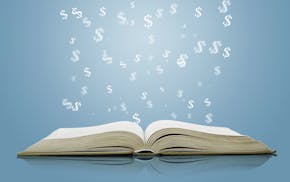Dividend-paying stocks aren't just your Grandma's stock pick anymore. In these risk-averse-yet-yield-hungry times, more investors are turning to these stalwart market workhorses as a way to participate in the stock market's gains and earn a little income.
Dividend-paying stocks, or the so-called "equity income" funds mutual funds that own them, are companies that give investors a piece of their profits in the form of a dividend payout, typically quarterly. These companies tend to be larger, more stable companies that have been around a long time. Think 3M, General Mills and Medtronic.
Most investors own several dividend players, but probably don't think of them in such terms. Three-quarters of the stocks in the Standard & Poor's 500 now pay dividends, according to research from Brian Belski, Oppenheimer Asset Management's chief investment strategist.
Considering how much cash companies are sitting on, and how just over one-quarter of these companies have raised dividends over the past five years, "there is a lot more room for dividends to grow," Belski predicts. "If you are building cash up and giving it to shareholders, that's pretty exciting -- that's a real strong case to buy American and build credibility for equities again."
He thinks dividend-payers are a "burgeoning" asset class, which will look even more attractive to investors as they leave bonds over concerns about interest rates and global debt issues.
With money market funds earning next to nothing, and most Treasurys paying less than 3 percent, "everybody's looking for yield, but it's just not out there unless you want to get into junk bonds, distressed debt," or other riskier bonds, said Bill Frels, CEO of Mairs and Power, a St. Paul-based mutual fund company that owns many Minnesota-based, dividend-paying stocks.
Ben Marks, chief investment officer of Marks Group Wealth Management in Minnetonka, says one reason dividend-paying stocks are so attractive right now is because they are yielding as much as, if not more than, 10-year Treasury bonds. Plus the upside of having a high quality stock that can appreciate in value.
Take General Mills, which he owns. The dividend yield is 3.3 percent, higher than the yield on a 10-year Treasury bond. 3M, which has not only paid dividends for decades, but raised them annually, is paying 2.3 percent. Both also offer yields greater than the dividend yield of the overall market.
Consider more than size of dividend
Dividends are reassuring given what we've been through. A stock's value is on paper; a dividend is cold, hard cash. But the size of a dividend shouldn't be your only consideration when picking a stock, although it may be tempting to find the fattest one and hit "buy." As with all investments, you need to do your research, and consider the company's overall health and its long-term growth potential in addition to its dividend.
To evaluate the dividend, check to see if a company has paid a dividend consistently and has raised that dividend over time. Both are good signs.
Consider the "payout ratio," the percentage of a firm's profits that are paid out annually in dividends. 3M's payout ratio is 37 percent. General Mills' payout ratio is 41 percent.
Marks looks for companies with payout ratios no higher than 50 percent; he's on the hunt for sustainable dividends that can be increased over time. If a company pays out 90 percent of its available cash in dividends, there is a greater chance the dividend could be cut. "Try to figure out what the sustainability of the dividend is and the likelihood that the dividend is going to increase," he said.
Once you decide which stock to buy, you must decide whether to reinvest, or take the dough. If you don't need the income, reinvest it. That's where a lot of your portfolio growth will come from.
Of course, there are downsides to every investment. Dividend-payers can always lower or eliminate their dividends, as banks were forced to do during the financial crisis. Frels expects U.S. Bank and TCF to increase their payouts by early next year at the very latest. But they're being cautious, he says, because they don't want to cut their dividends and disappoint investors.
Another risk is that, as with any stock, these can drop in value, although research has shown they fare better during downturns.
The risk that has most financial advisers poised to act has to do with taxes. Currently, dividends are taxed at 15 percent and will remain taxed at that level through 2012, when the Bush tax cuts are set to expire. After that, it's anyone's guess.
Staff writer Patrick Kennedy provided research for this column. Kara McGuire • 612-673-7293 or kmcguire@startribune.com. Twitter: @Kara_McGuire


